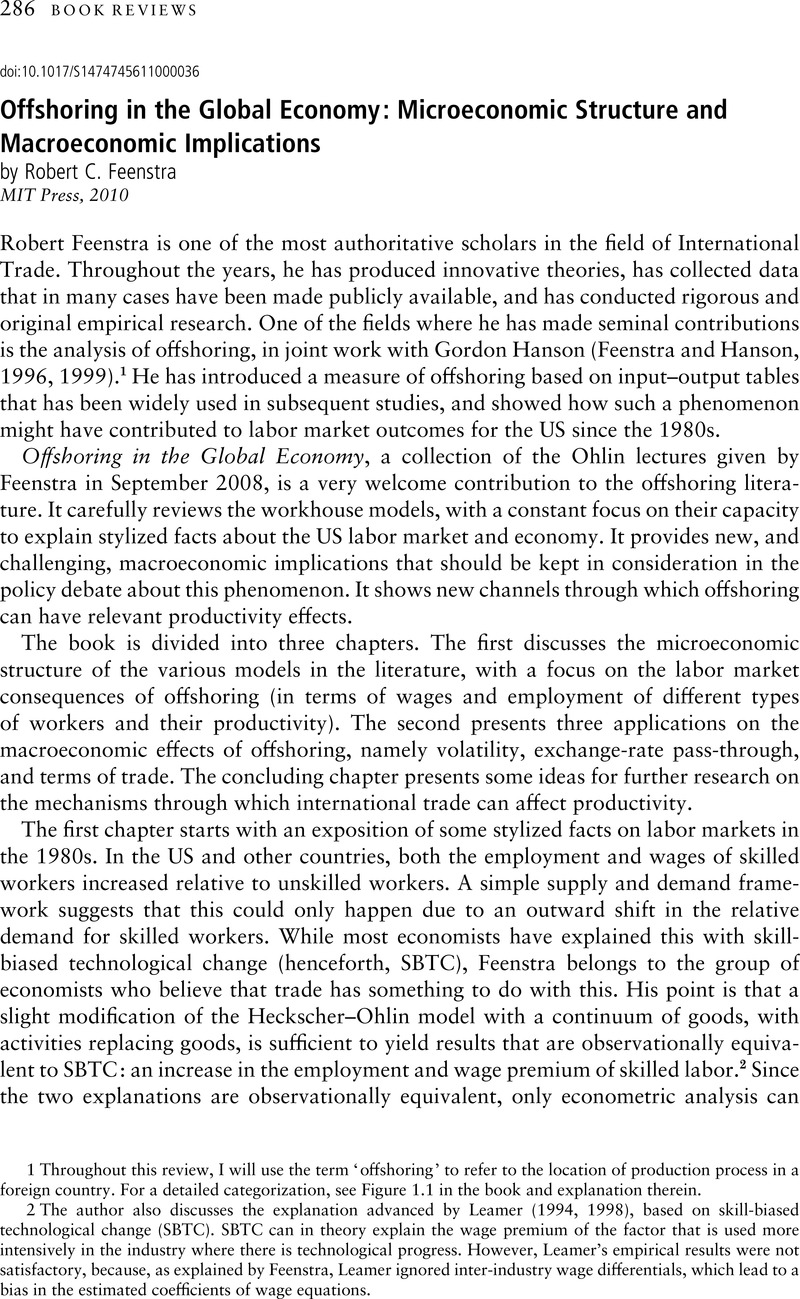No CrossRef data available.
Published online by Cambridge University Press: 19 April 2011

1 Throughout this review, I will use the term ‘offshoring’ to refer to the location of production process in a foreign country. For a detailed categorization, see Figure 1.1 in the book and explanation therein.
2 The author also discusses the explanation advanced by Leamer (1994, 1998), based on skill-biased technological change (SBTC). SBTC can in theory explain the wage premium of the factor that is used more intensively in the industry where there is technological progress. However, Leamer's empirical results were not satisfactory, because, as explained by Feenstra, Leamer ignored inter-industry wage differentials, which lead to a bias in the estimated coefficients of wage equations.
3 If the measure of SBTC is the fraction of high-tech equipment in new investment, the contributions of SBTC and offshoring to the wage premium are respectively 99% and 12%. The author claims that the other measure of SBTC is to be preferred (see p. 27 and footnote 7). The main message is however that the results are sensitive to the measurement of SBTC and should be taken with caution.
4 In the presentation of empirical results, there is no reference to any study that looks at the relative contribution of high-technology equipment versus offshoring to the fall in the relative demand of skilled workers in the 1990s. Crinò (2007), mentioned in the text, focuses on the effect of service offshoring and shows that it lowers the employment of high-skilled workers in routine (tradable) occupations, relative to the employment of high-skilled workers in non-routine (non-tradable) occupations in the US.
5 GRH also show that in a model with more factors than goods there is a third effect (‘labor supply effect’) counteracting the productivity effect. For instance, in a one-sector model, the increase in the effective unskilled labor due to the productivity effect is not absorbed by inter-sectoral reallocations, and the excess supply of the factor leads to a decrease in its relative reward. Feenstra's exposition of the intuition for this result (p. 40) is remarkable.
6 Even within finely disaggregated trade flows, there is heterogeneity in technologies and factor use. The factor requirements observed from more aggregated trade data are averages that do not reflect this heterogeneity.
7 In further research, it would be interesting to see whether this result is replicated for other offshoring-recipient countries.
8 The mechanism why increased product variety leads to more effort, and therefore more productivity, is however not very clear to the reader.
9 As an aside, this means that there are scale effect on effort. How, and whether effort depends on scale effects or on increased product variety is not discussed by the author.